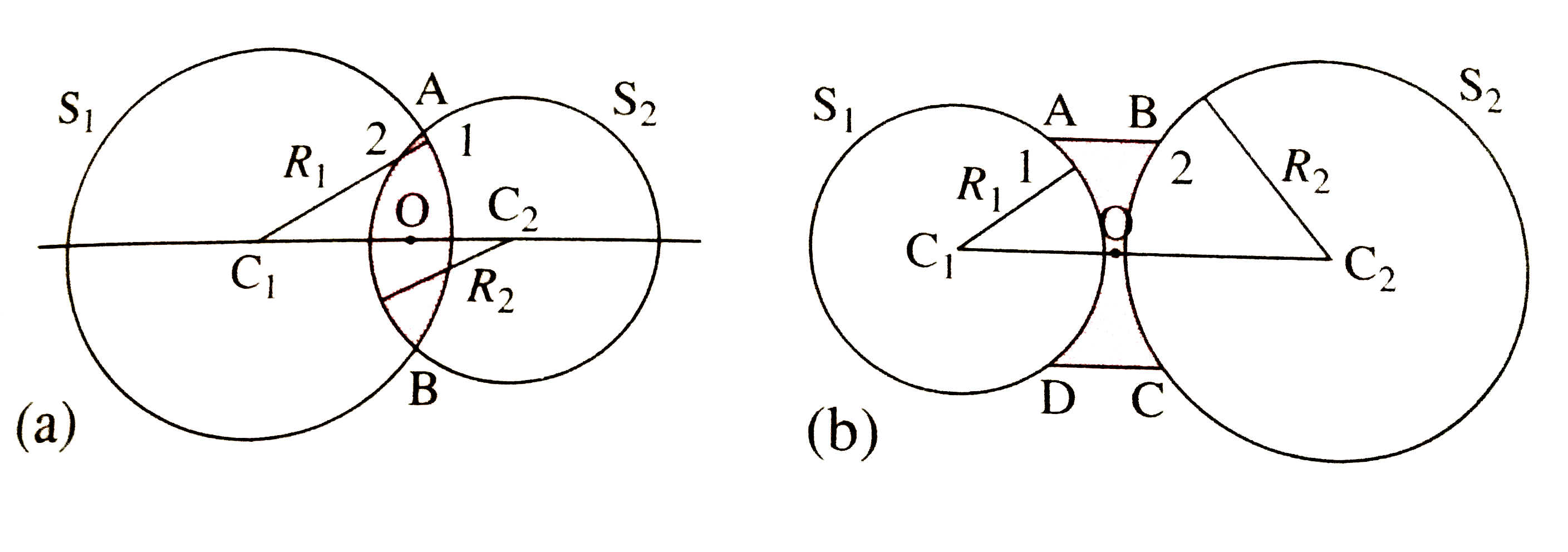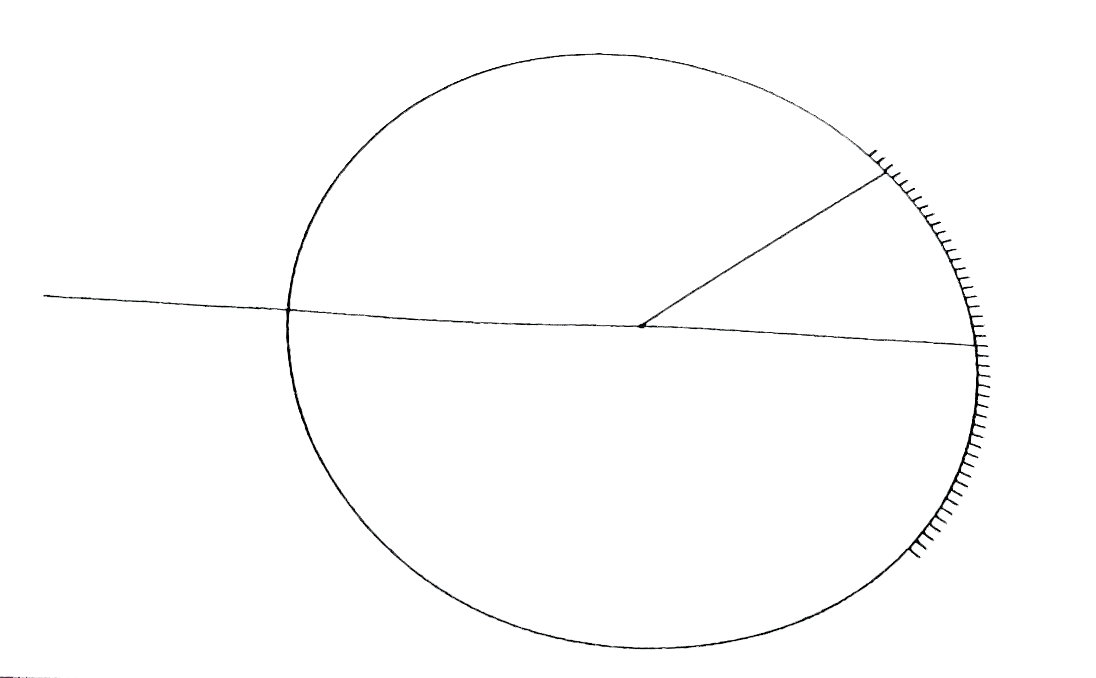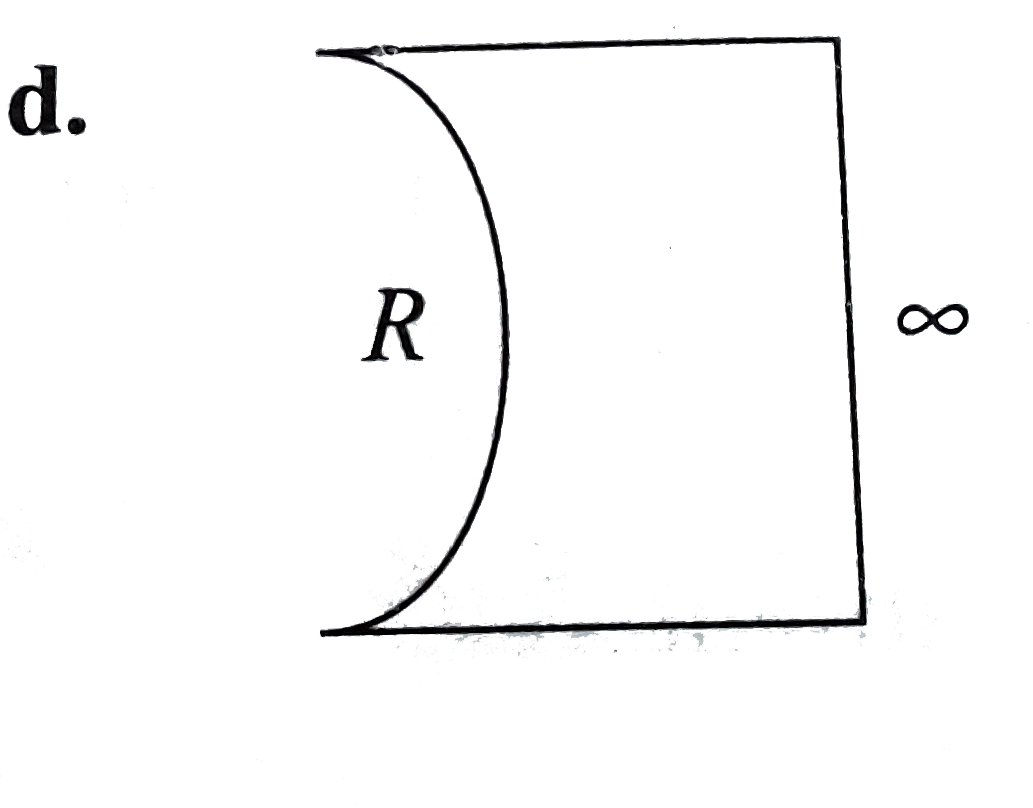With reference to spherical lenses, state the meaning of the following terms or define the following terms and draw the diagrams to illustrate the same : (1) centre of curvature (C) (2) radii of curvature (R1,R2) (3) principal axis (4) optical centre (O) (5) principal focus (F) (6) focal length (f)
Centre of curvature (C) : The centres of the spheres whose parts form the surfaces of a lens are called the centres of curvatures of the lens . A lens has two centres of curvatures C1 and C2 for its two spherical surfaces.
(2) Radii of curvature (R1,R2) : The radius of the spheres whose parts form surfaces of a lens are called the radii of curvatures of the lens.
(3) Principal axis : The imaginary striaght line passing through the two centres of curvatures of a lens is called the principal axis of the lens.
(4) Optical centre (O) : The point inside a lens on the principal axis, through which light rays pass without changing their path is called the optical centre (O) of the lens.
(5) Principal focus (F): When ligth rays parallel to the principal axis are incident on a convex lens they converage at a point on the principal axis. This point is called the principal focus (F) of the convex lens. Light rays travelling parallel to the principal axis of a concave lens diverage after refraction in such a way that they appear to be coming out of a point on the principal axis. This point is called the principal focus of the concave lens. A lens has two principal foci F1andF2 .
(6) Focal length (f) : The distance between the optical centre adn the principal focus of a lens is called the focal length f of the lens .

The cross sections of convex and concave lenses are shown in parts (a) and (b) Fig. The surfaces marked as 1 is part of sphere S1 while the surface marked as 2 is part of sphere S2


Topper's Solved these Questions
- LENSESBook:NAVNEET PUBLICATION - MAHARASHTRA BOARDChapter:LENSESExercise:Give scientific reasons
Explore 16 Videos
- LENSESBook:NAVNEET PUBLICATION - MAHARASHTRA BOARDChapter:LENSESExercise:Distinguish between
Explore 6 Videos
- LENSESBook:NAVNEET PUBLICATION - MAHARASHTRA BOARDChapter:LENSESExercise:Answer the following questions in one sentence each :
Explore 10 Videos
- LAWS, RULES, UNITS AND DEFINITIONS Book:NAVNEET PUBLICATION - MAHARASHTRA BOARDChapter:LAWS, RULES, UNITS AND DEFINITIONS Exercise:Carbon Compounds
Explore 18 Videos
- MAKING CONCEPT DIAGRAMS Book:NAVNEET PUBLICATION - MAHARASHTRA BOARDChapter:MAKING CONCEPT DIAGRAMS Exercise:Cell Biology and Biotechnology
Explore 2 Videos
Similar Questions
Define the following terms in the context of spherical mirrors :
(i) Pole
(ii) Centre of curvature
(iii) Radius of curvature
(iv) Principal axis
(v) Principal focus
View SolutionIndicate the following terms related to spherical mirrors in figure : pole, centre of curvature , radius of curvature , principal focus.

View Solution
Knowledge Check
Which one of the following sperical lenses does not exhibit dispersion? The radii of curvature of the surfaces of the lenses are as given in the diagrams.
R1≠R2A B
B C
C D
D

Rays parallel to principal axis, incident on the spherical mirror at different heights from principal axis are focused at different points. And due to this reason we cannot define unique focus. This is known as spherical aberration. Angle of incidence θ shown in figure depends on the height of ray above principal axis. Focal length of spherical mirror can be easily written in terms of angle θ shown in figure as follows :
f=R−R2secθ
Here R is radius of curvature of mirror. The light rays which are very close to principal axis are known as paraxial rays and rays far away from principal axis are called marginal rays.
Let fP and fm represent the focal length corresponding to paraxial rays and marginal rays respectively thenALet fp and fm represent the focal length corresponding to paraxial rays and marginal rays respectively thenBfp=fmCfp>fmDfp<fm
Rays parallel to principal axis, incident on the spherical mirror at different heights from principal axis are focused at different points. And due to this reason we cannot define unique focus. This is known as spherical aberration. Angle of incidence θ shown in figure depends on the height of ray above principal axis. Focal length of spherical mirror can be easily written in terms of angle θ shown in figure as follows :
f=R−R2secθ
Here R is radius of curvature of mirror. The light rays which are very close to principal axis are known as paraxial rays and rays far away from principal axis are called marginal rays.
For paraxial rays focal length is approximatelyAFor paraxial rays focal length is approximatelyB2RCR/2D4R
Define the following terms in the context of spherical mirrors :
Pole, centre of curvature, principal axis, and principal focus.
View SolutionThe refractive index of a converging lens is 1.4. What will be the focal length of this lens if it is placed in a medium of same refractive index? Assume the radii of curvature of the faces of lens are R1andR2 respectively.
View Solutionstate which of the following are one-one and onto function f:R→R defined by f(x)=2x+1
View SolutionDraw ray diagrams for the following cases when a ray of light :
(i) passing through centre of curvature of a concave mirror is incident on it.
(ii) parallel to principal axis is incident on convex mirror.
(iii) is passing through focus of a concave mirror incident on it.
View SolutionWhich of the following is an equation of the ellipse with centre (−2,1), major axis running (−2,6) to (−2,−4) and focus at (−2,5)?
View Solution

